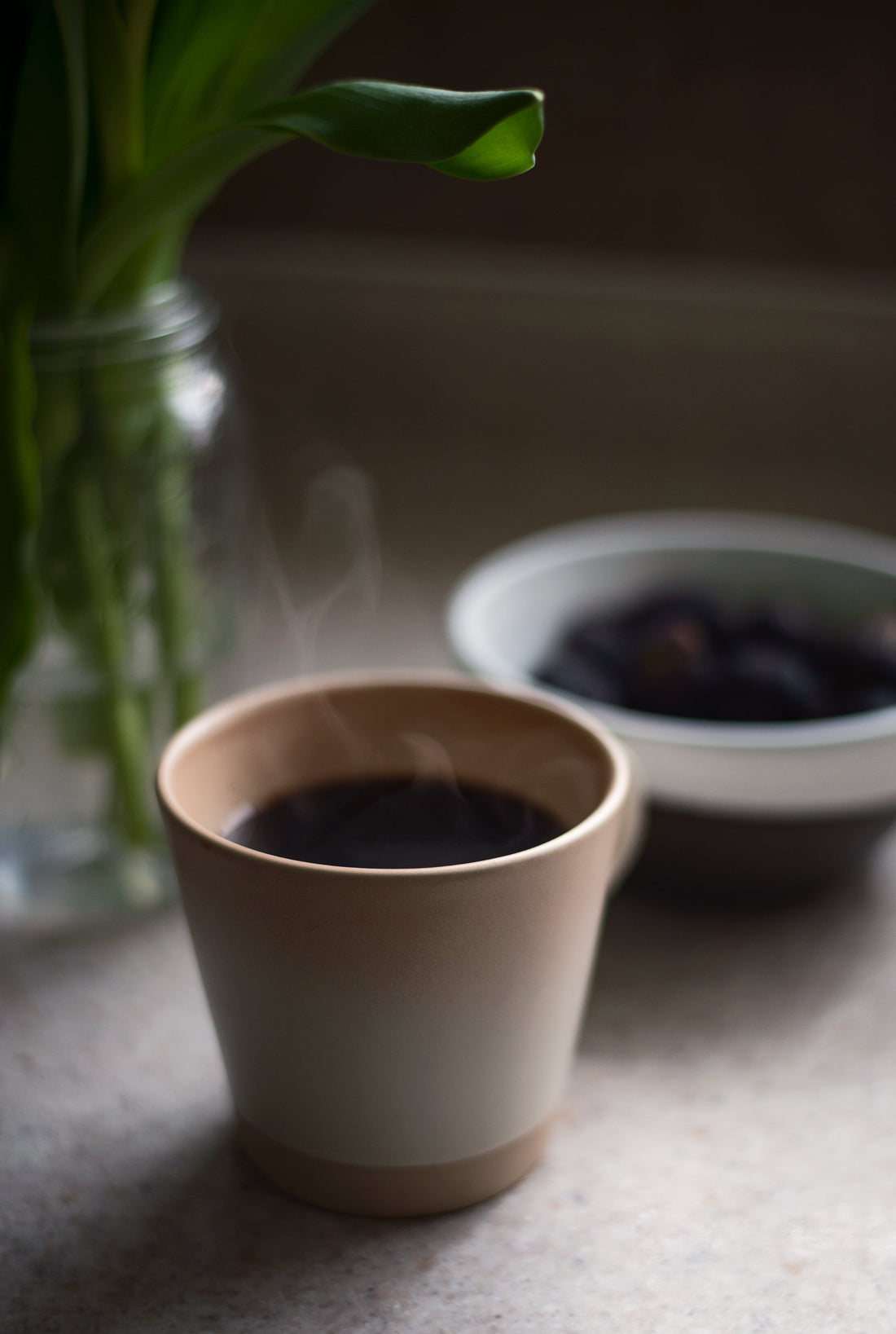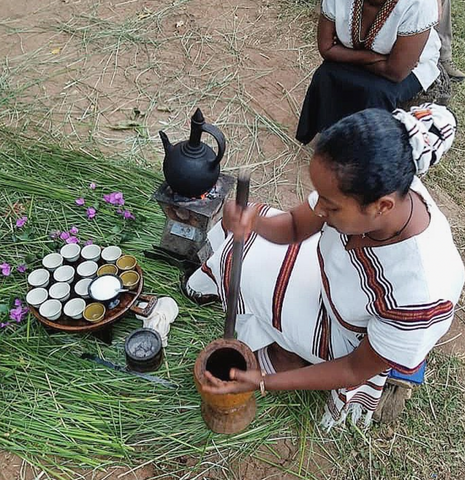
Tea and Coffee Culture, differences in consumption and culture!
Tea and coffee have been present in the history of humanity from centuries, being consumed by almost all countries in our civilization, traded from one country to another as a result of conquering, slavery, commerce and religion.
Today, millions of people start their day with one of these two beverages and spend their day consuming one or the other (or both), with a "normal" consumption range of two to three cups per person.
How we human beings prepare and drink these beverages will depend on our physical geography, age and culture. As a coffee and tea professional, I can't stop thinking about the relationships between them, and at the same time the differences. The culture behind them, their origin and people's perception of what each of them represent.
China is the birthplace of tea culture (according to UNESCO, Camellia sinesis has a number of possible places of origin but it is generally accepted that it originates from Central Southeast Asia in the region at the intersection of what is today North East India, Northern Myanmar, and South West China) and tea plays an important role in the daily life. There are seven critical things in Chinese people's life: firewood, rice, cooking oil, salt, sauce, vinegar and tea. Similarly, Africa is the birthplace of coffee, and today coffee has become a necessity in many countries around the world.

In Dictionary of Chinese Tea, tea culture is: “the combination of material and spiritual wealth of tea which are produced in the process of human development.
It makes material as its carrier and reflects spirit. It is a high harmonious product of material and spiritual civilization; it belongs to the “intermediary culture”. Tea culture includes the history of tea, the cultural environment of the tea-producing areas, tea-producing technology, various kinds of tea and tea sets, tea-drinking custom, tea arts, books, paintings, poems about tea, and other cultural art forms. The structure of tea culture includes three levels which are material culture, institutional culture and spiritual culture.” (Chen Zongmao, 2008, p.12).
Coffee culture "describes a social atmosphere or series of associated social behaviors that depends heavily upon coffee, particularly as a social lubricant. The term also refers to the diffusion and adoption of coffee as a widely consumed stimulant by a culture".
The tea drinking emphasizes environment very much, since the Chinese look on tea drinking as a kind of art and the harmony of tea, drinkers, scene and objects; in another word, tea should be of high quality, scene should be beautiful and artistic, and the display of objects should be elegant and graceful, hence the marvelous atmosphere of tea tasting.
Today, in the name of modernization, many tea & coffee shops offer the same basic menus (black and green tea, maybe Chai and some infusions) served with hot water and a cup. Not so much attention to details.

Enjoy the tea experience
In a recent report lead by FMI (Future Market Insights) on the Organic Tea Market Outlook 2022-2032 established that is "(...) expected to reach market valuation of US$ 1.2 Bn by the year 2022, accelerating at a CAGR of 8.2% by 2022-2032.(...)". See the report here => Organic Tea Market Report
The report added that "(...) Organic tea market is likely to account for ~1% of the overall functional beverages market, which is anticipated to be valued at US$ 122.5 Bn by 2022 end. (...)". The report continues "(...) tea sales will witness a moderate growth over the forecast period owing to rising demand for flavonoid-based beverages, which contain antioxidants. Growing concern about cadmium's harmful effects on human health (read here => What is cadmium?) are likely to broaden the range of nutritional products obtained from organic crops. Moreover, benefits of organic tea include maintaining digestive health and activating good bacteria in the gut thus improving gut health. (...)".
Clearly, the opportunities for growing a tea program based on high quality and a whole new sensory experience for consumers are vast and un-limited because Tea is a natural selection to the dining experience, offering a healthy choice. Also, because of the pandemic many people started the process of home-testing and home-rituals expanding and broadening their senses in connection with tea.
In the other hand, Coffee drinking is all about people, sharing, being out, enjoying company, informality, relax, music and spaces. In the latest Coffee Report from June the International Coffee Organization - ICO - reported "(...) the world coffee consumption is still projected to grow by 3.3% to 170.3 million 60-kg bags in 2021/22 as compared to 164.9 million for coffee year 2020/21. In 2021/22, consumption is expected to exceed production by 3.1 million bags. However, exogenous factors such as reduced global economic growth and increased cost of inputs, production and trade may affect both supply and demand in the remaining four months of coffee year 2021/22. (...)". (Read the latest ICO report here).

Iced Coffee in a coffee shop
When people go to a coffee shop, they expect their coffee to be served almost immediately (if you read our last blog post about New York, you will remember that hardly any coffee shop offered pour-overs, instead they have drip coffee in batches). And this is a big difference with tea, because the stepping process take time, especially when you are using high quality teas & infusions, where depending of the leaves process you will require different temperatures and times. And that is a challenge for the specialty tea industry in comparison to coffee. However, I believe that when you do it right, and create the correct atmosphere for the customer, they understand and happily wait for the beverage, in promise of a high quality cup of tea. In the coffee shop we use to be partners of in Buenos Aires, Argentina we never had any problem with our tea program, people knew in advance that in order to enjoy the tea at its maximum, they needed to wait. The way we decided to present the liquor was using a tea decanter (french press) and a timer, so they enjoyed the bloom and color change of the leaves with the water. Colors is a really interesting way to sensory-experience food and beverages and I fully recommend owners to consider these as an important factor if their business.

Zi Juan aka Purple Beauty (Black Tea from China)
Through the process of tea sipping and appreciation of tea arts, people can enjoy the wonderful artistic atmosphere in their life, so that they can go into the state of self-cultivation, open-mindedness, and then achieve physical fitness, purification of the mind and even get rid of diseases, according to ancient scriptures. Some scholars said the tea ceremony is the core of the Eastern culture, the essence of humanism and the treasure of all mankind. There is so much literature related to tea that sometimes I feel I don't have a big enough brain to get it all or enough time to read it. For instance, one beautiful aspect I found fascinating about tea are the four principles of tea, which are Wa (harmony), Kei (respect), Sei (purity), and Jaku (tranquility). As a Karate person myself, I found a strong connection with martiality and discipline, and even something so simple like steeping some tea leaves are deeply connected with these two words.
Through the process of coffee drinking people expect awareness and active consciousness of mind. It is always considered as an energy fuel (Oh caffeine, thank you so much 🫶) and not so much about other benefits that coffee provides (a roasted bean has more than 1000 chemical compounds within). There is no doubt that brewing coffee is so much more relaxed and less self-aware. If anything, it is really extrovert in opposition to tea steeping.
In Ethiopia, mother of Arabica coffee, the ritual to brew coffee has been respected for centuries, and you find it wherever you go to visit, no matter the social status of people involved. Rich and poor (the majority of the population) enjoy this process accompanied with salt (some places put salt instead of sugar in the cup) and pop corn. The ritual takes time, and it is a moment for savoring the experience, starting with the spreading of fresh grasses and flowers on the floor and table. Then, incense burns, typically filled with sandalwood or pine, intoxicating the air with these incredible aromas. Then, the coffee is roasted in front of you in an open pot, until it is dark and oily. They offer you to smell the beans. The beans are ground in a mortar, and then added to the Jebena, a special spouted pot containing boiling water. The brewed coffee is served in smalls cups. The coffee is bitter, strong and with heavy body. I tried to summarize the ritual, but honestly you have to be there to fully picture the beauty of the process.

Jebena Buna Ceremony, grinding moment, Yirgalem (Irgalem) - Ethiopia
Tea and coffee are two different beverages if we see them separated, on their origin and culture, but not so much if we consider the multiple options presented when both of them are well understood and managed with their own uniqueness and characteristics, even within the same company. A poor low-quality tea program can lead to bad views of the coffee program, even if this one has good sourcing practices and resources.
I don't want to finish this post without saying that I truly believe that these days consumers are demanding so much more of companies they like, either coffee or tea, and shop owners should challenge their programs to offer better products. High quality, not only in the way they were sourced, or because they fulfill a specific certification, but because flavor combinations with trending ingredients such as botanicals, flowers & Asian dessert flavors excite consumers. The tea culture is ready to join coffee and both together can change people's perception of the sensory experience while educating them about the benefits of these millennial cultures.

Thank you for reading and if you like it, feel free to share it and leave a comment.
María Esther Thome-López
